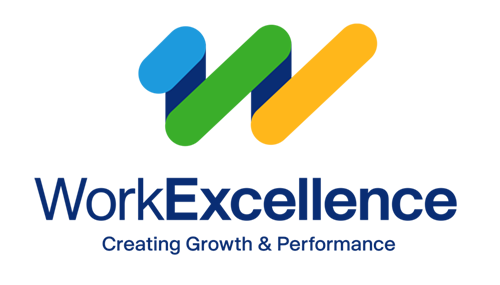Running a business is an incredibly rewarding experience, but it’s not without risks. Entrepreneurs regularly deal with challenges that can make or break their companies. As the world adapts to innovative and economic changes, business leaders must constantly address the neverending threats and find more ways to uncover more opportunities.
At the heart of every strategy is the CEO, providing direction and leadership as the company braves industry developments. The second quarter of 2023 presents even greater challenges, with fast-evolving technology, changing consumer behavior, and economic downturns reshaping the business landscape.
CEOs must alter their strategic plans to align with the current economic environment’s realities. One way of achieving this is by adjusting long-term goals to reflect short-term downturns, enabling companies to capitalize on crises and remain sustainable while thriving during challenging times.
Stay ahead of the game by prioritizing pressing concerns and developing effective strategies to address them. Let’s take a closer look at these challenges in detail and explore potential solutions.
Top Priorities for CEOs in Q2 2023
1. Digital Transformation
Artificial intelligence, the Internet of Things (IoT), blockchain, quantum computing, and other technological innovations are changing how we do business, paving the way for new business models, products, and services. Adapting to these digital technologies is crucial to maintain a competitive edge.
Digital transformation pertains to integrating digital technology in a business, from modifying daily operational processes to improving customer experience. It benefits businesses in many ways, eliminating manual tasks and automating processes across all touchpoints, leading to quicker, consistent results.
CEOs must redesign their strategies and leverage technological developments to ensure their companies are future-ready. By doing so, they can create new products and services and give rise to additional revenue streams. Conversely, failing to keep up with digital trends and technologies can result in businesses falling behind their competitors.
2. Cybersecurity
With technological advancements come cybersecurity problems that can cause financial losses, operational disruptions, and reputational damage. Depending on the nature of the stolen or exposed information, legal and regulatory problems may also arise. For example, opening suspicious email links, performing unauthorized system changes, and failing to address technical vulnerabilities can spark a massive breach and multi-million dollar loss.
Cybersecurity pertains to preventative measures to protect data, programs, and systems from digital threats and attacks. These threats include malware, ransomware, phishing, denial-of-service (DoS), and distributed denial-of-service (DDoS) attacks. Robust cybersecurity measures, practices, and solutions should be in place to prevent these, including regular security assessments, safe password practices, software updates, and data recovery processes.
CEOs should proactively promote security awareness and training initiatives to mitigate risks. In addition, it’s necessary to nurture a strong cybersecurity culture to ensure that employees understand everything and comply with the programs to protect themselves and the company.
3. Economic Downturns
CEOs must remain vigilant amid economic downturns that threaten the stability of their companies. Towards the second quarter of 2023, they may face many financial challenges due to geopolitical instability, trade tensions, chain supply disruptions, and uncertainties in the post-pandemic world.
Economic slowdown can result in declining consumer spending and reduced demand for goods and services, significantly impacting businesses. Therefore, CEOs must monitor market trends and adapt to ever-changing industry conditions to position their companies for success.
To weather the storm, they should focus on cost control, diversification, automation, and improving customer experience and supplier relationships. Mergers and acquisitions are also viable options for bigger corporations to maintain profitability and gain access to new markets and resources.
CEOs must prioritize cash flow management for growth and maintenance. Effective cash flow management becomes even more critical during turbulent times to ensure long-term profitability and sustainability. Cash flow, the amount of cash that moves in and out of a business over a specific period, must be monitored closely.
By making frequent projections, CEOs can determine issues early and take appropriate actions. They should focus more on increasing sales and reducing expenses to generate positive cash flow. This can be achieved through pricing optimization, improving operational efficiency, and negotiating better supplier deals. Explore new potential funding sources to ensure long-term viability, especially when facing challenging market conditions.
4. Employee Retention and Leadership Development
It is crucial to match labor to the amount of current and projected demand during an economic slowdown. Therefore, CEOs must carefully consider their hiring decisions. Open roles should be replaced slowly, and team members should only be laid off when necessary to survive the crisis. Losing experienced and dedicated employees can harm morale and productivity.
If downsizing is inevitable, CEOs offer career counseling and severance packages to affected employees. Otherwise, prioritize employee retention to maintain stability. Providing opportunities for growth and development and fostering a positive work environment can encourage employees to remain with the company for the long term.
In addition to retaining current employees, companies should focus on attracting and hiring new talent to drive progress. Investing in leadership development can help build a pipeline of future leaders, ensuring a smooth transition as current ones retire or move on to other opportunities.
5. Increasing Customer Expectations
In this day and age, operating a brick-and-mortar store is no longer enough. People seek more memorable, interactive strategies that make purchasing more convenient. To remain competitive in their industries and enhance customer satisfaction and loyalty, CEOs must keep up with the evolving expectations of their target market.
They should recognize that consumers want personalized experiences that meet their needs and preferences. One effective way to achieve this is by leveraging technology to tailor their offerings and provide customized experiences. This way, companies can create lasting impressions and build strong customer relationships, ultimately leading to improved sales and long-term profitability.
The COVID-19 pandemic has accelerated digital transformation and changed the way consumers behave. Social media, websites, apps, chatbots, and other online channels are no longer just for leisure. Using these platforms means business, helping brands gather customer data to deliver personalized promotions and reward programs.
6. Sustainability
Run a purpose-driven business to cope with the economic and environmental challenges 2023 will bring. Aside from the issues that plague the current economy, CEOs must learn how to integrate sustainable practices in their operations to contribute to social progress and ecological balance.
Climate change, fossil fuels, and other related issues are critical sustainability concerns that businesses must address in every way possible to minimize negative environmental effects. For instance, investing in energy-efficient equipment like LED lighting or solar panels can reduce utility bills, operating costs, and greenhouse gas emissions.
Environmentally responsible companies are perceived as more responsible and resilient organizations committed to a sustainable future. As we experience the far-reaching effects of climate change, more and more consumers are becoming eco-conscious and supportive of businesses prioritizing sustainability. By implementing sustainable practices, organizations can decrease their environmental footprint and, at the same time, improve their reputation.
7. Supply Chain Problems
The global supply chain crisis affects companies from various industries, causing production delays, missed delivery deadlines, and lots of missed opportunities. These issues were already prominent at the height of the COVID-19 pandemic lockdowns and are now exacerbated by rising fuel costs, inflation, and global political unrest.
As supply chain problems show no signs of slowing down this year, executives must take proactive steps to prepare for potential disruptions. Businesses worldwide struggle to purchase raw materials and secure alternative sources for their essential products. As a result, CEOs must take a proactive approach to mitigate risks associated with the supply chain and ensure the continuity of operations.
It’s crucial to pay attention to every detail, including establishing relationships with suppliers from different regions and identifying potential risks for each one. They should also negotiate for better prices to ensure they have a sufficient stock of critical items in case the supply chain flow is disrupted.
8. Revenue Growth Management
Amid economic downturns, businesses face significant challenges to maintain financial stability. To thrive during such times, CEOs must prioritize top-line growth and maintenance with an applicable margin, as well as bottom-line growth through cost control and margin dollar enhancements.
Top-line growth pertains to maintaining or increasing revenue, while maintaining an appropriate margin ensures that the company can cover its operating expenses and generate a profit. On the other hand, bottom-line growth is achieved by reducing costs while increasing revenue, ultimately resulting in improved net income, EBITDA, and operating income.
CEOs can achieve this by identifying and pursuing new revenue streams, developing innovative products and services, and implementing effective cost-cutting measures without sacrificing quality. By prioritizing top-line and bottom-line growth and maintenance, companies can sustain their businesses even in times of economic downturn.
Businesses must constantly adjust their strategies, including regularly analyzing financial statements, controlling costs, generating more leads, and focusing on revenue growth management, to thrive in today’s competitive business environment.

